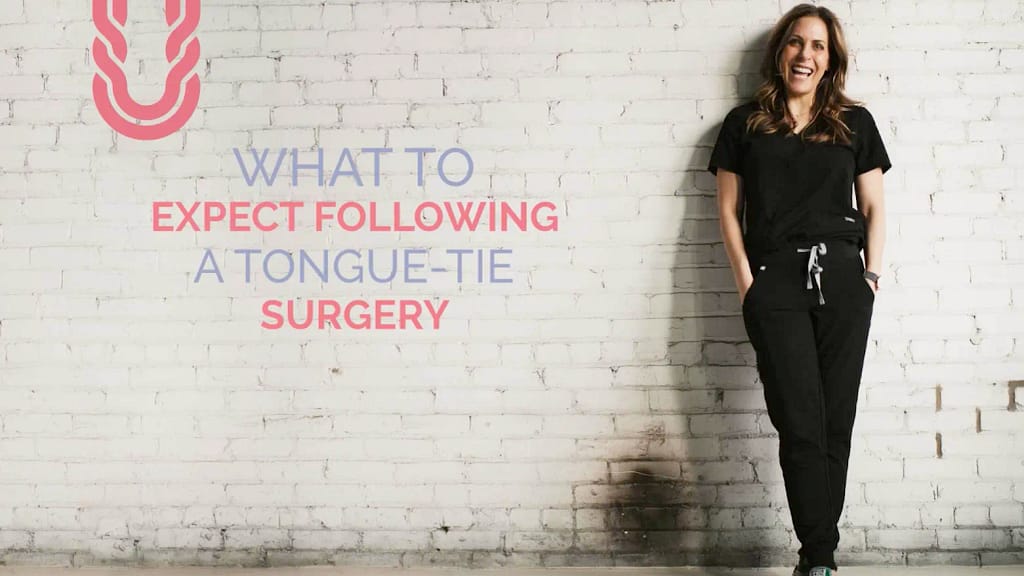Menu
What to Expect Following a Tongue-Tie Surgery

Play Video
What Else does Untethered Treat?

Play Video
Why a Tongue-Tie Release Requires Multiple Appointments

Play Video
Who Do I Treat? It’s Not Only Babies!

Play Video
Dispelling Myths about Tongue-Ties

Play Video
How Often Should Exercises be Completed?

Play Video
Why I Have Chosen the CO2 LightScalpel for Tongue-tie Releases

Play Video
How to Prepare for Your Upcoming Appointment

Play Video
Does Untethered Take Insurance?

Play Video
Additional Video Q&A
Curated videos from Dr. Graham's colleagues at The Breathe Institute
Describe the Infant Tongue-Tie Release Procedure. Does it Hurt?
What are the Effects of Untreated Infant Tongue-ties?
What exactly is a tongue-tie? And what is a frenulum?
What Breastfeeding Issues Might Moms of Tongue-tied Babies Experience?
What Happens After the Infant Tongue-Tie Procedure?
How Do You Work with Lactation Consultants Before and After Treatment?
Epigenetics and Tongue-Tie: What It Is, and Why It’s Making Us the Sickest Generation Yet!
Post Op Instructions for Functional Frenuloplasty at the Breathe Institute
What is A Posterior Tongue Tie? Did You Know There are 2 Types of Tongue-Ties?
Tongue-Tie Surgery (Frenectomy) Tips for Adults and Kids!
How Tongue Mobility Changes Face and Jaw Development
FAQS
Here are some of our most frequently asked questions and our answers
Here is a list of symptoms to look for in your child:
- Insufficient weight gain
- Blisters on lips
- Noisy feeding, sometimes described as a “clicking” sound
- Curling tongue while feeding
- Behaviors similar to acid reflux
- Persistent fussiness
- Pain for the mother during nursing
- Consistent mouth breathing where the lips are apart, even slightly
- Chapped lips
- Crowded teeth
- Front teeth that don’t touch
- Thumb-sucking
- Restless, tossing and turning quality of sleep
- Snoring, clenching and grinding teeth while sleeping
- Enlarged tonsils and adenoids, including sinus and ear infections
- Dark circles under the eyes and signs of daytime tiredness
- Tongue thrust and/or Over-exertion used when swallowing
- Bed wetting, picky eating, or allergies
- Daytime sleepiness
- Hyperactivity or signs of ADD/ADHD
Of course, your children are perfect as they are! While we do not intend to change how a child looks, there is a benefit to positively influencing facial development in the early years of life. By the time a child reaches puberty, the bulk of their facial development will be complete.
In addition to aesthetics, facial growth plays a major role in airway, which is an essential factor of health and development. Without proper nasal breathing, lip seal and tongue positioning, the craniofacial structure changes negatively. This can result in something called mid-face deficiency and lead to an overly-long face.
One of the most commonly asked questions we get is, “What can we expect after the surgical release of our baby’s tongue tie?”
While every baby is different, we always recommend lots of skin-to-skin, snuggling and on-demand nursing.
Following a tongue-tie release, we recommend a series of post-operative stretching exercises for optimal healing. By stretching the wound as it heals, we can control the rate at which it heals and the shape in which it heals.
Ideally, these stretches are performed roughly every 3 hours. We recommend creating a routine that works for your family and is easy to maintain, such as during every diaper change.
Learn more about frenectomy aftercare.
As parents, we all want what is best for our children. That means a balance of finding the most effective interventions that make them healthy and happy. But that needs to be balanced with practical matters: time, expense, mental/emotional capacity and more. In the case of disordered breathing and airway development, it’s critical to understand that proactivity matters. So many lifelong struggles can be avoided with relatively easy, early action on the part of parents.
By examining, diagnosing and treating our youngest patients, we can achieve many benefits:
- Set the stage for proper facial growth,
- Avoid more complex, costly issues in adulthood (sleep apnea, dental complications, jaw surgery, etc.).
- Prevent crowded and crooked teeth, avoiding unnecessary and harmful extractions.
Many things have changed since we were kids. We now know more, and we know better. In addition to more comprehensive research on the topic, a variety of physiological, nutritional and environmental changes over time have influenced airway development. So no, your parents likely did not think of these things when you were a child, but that doesn’t mean we shouldn’t address the pressing needs of our children as they present themselves today.
At Untethered, we don’t just treat babies. We treat babies, children and adults. As soon as we identify an issue (tongue tie, lip tie, restricted oral issues, breathing problems, altered growth, etc.) it’s never too late to address it.
Untethered Airway Health and Tongue-Tie Center is a “fee for service” practice, which means all fees associated with an appointment are due at time of service.
We have chosen to be out-of-network with all insurance plans so insurance companies cannot dictate the type of treatment we offer. This also allows us ample time to spend with our patients.
That said, as courtesy we will happily submit to your insurance (medical and dental) to help you get reimbursed.
Podcasts
Matthew Walker on the Joe Rogan Experience – science and sleep.
James Nestor on the Joe Rogan Experience – his book “Breath: The New Science of a Lost Art”
Dr. Mark Burhenne on the Broken Brain Podcast – the secret to better sleep.
The Munch Bunch Myo Podcast – all things myo.
Sherry Sami, DDS on The goop Podcast – a deeper understanding of holistic dentistry.
Previous
Next
